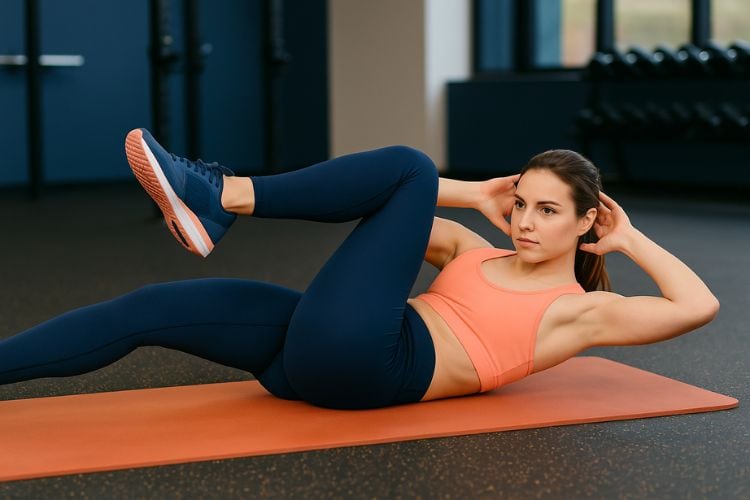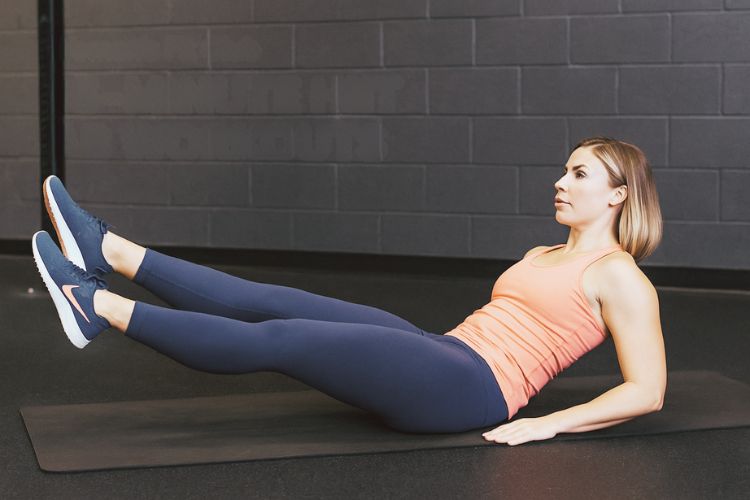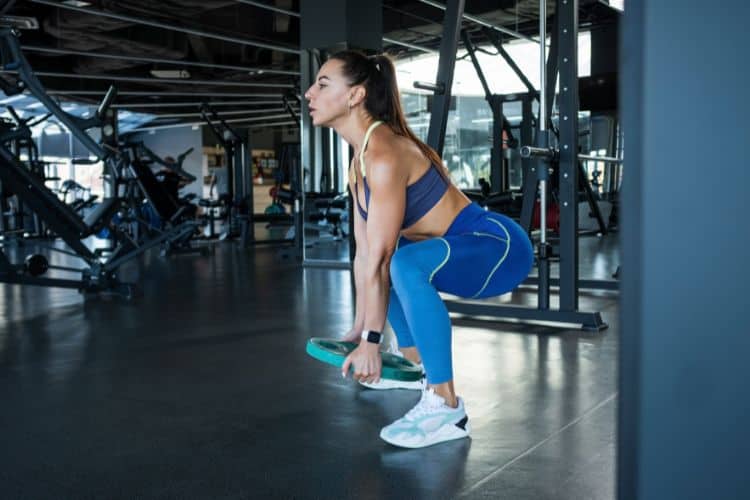Glute Workout Program Build Stronger Toned and Lifted Glutes
A well-designed glute workouts program is essential not just for aesthetics, but also for improving strength, athletic performance, and reducing injury risk. Whether your goal is a firmer backside, stronger hips, or better posture, glute training should be a non-negotiable part of your fitness routine.
In this comprehensive guide, we’ll break down a structured glute workouts program with beginner to advanced progressions, effective exercises, training splits, and tips to activate and grow your glutes.
Why Focus on Glute Workout Program?
The glute muscles—gluteus maximus, gluteus medius, and gluteus minimus—are the largest and most powerful muscles in your body. Here’s why strengthening them matters:
- Improves athletic performance: Powerful glutes enhance running, jumping, and lifting ability.
- Supports lower back and posture: Strong glutes stabilize the pelvis and spine.
- Reduces risk of injury: Prevents hamstring and knee injuries by improving hip alignment.
- Boosts metabolism: Bigger muscles burn more calories, aiding fat loss.
How Often Should You Train Glutes?
For best results, train your glutes 2–3 times per week. This frequency allows for proper muscle recovery and growth while keeping intensity high. You can integrate glute workouts into your lower body days or dedicate specific days to glute-focused training.
4-Week Glute Workouts Program Overview
Here’s a sample glute workout plan for four weeks, suitable for all fitness levels. You’ll alternate between strength-based movements, hypertrophy-focused exercises, and activation drills to ensure maximum glute development.
Weekly Split
- Day 1: Glute Activation + Strength Training
- Day 2: Rest or Upper Body
- Day 3: Glute Hypertrophy Workout
- Day 4: Cardio or Core
- Day 5: Glute-Focused Lower Body Day
- Day 6: Active Recovery
- Day 7: Rest
Day 1 – Glute Activation + Strength
- Glute bridges – 3 sets of 15
- Bodyweight hip thrusts – 3 sets of 12
- Kettlebell Romanian deadlifts – 3 sets of 10
- Walking lunges – 2 sets of 12 per leg
- Banded side steps – 3 sets of 15 per side
3 – Hypertrophy Focus
- Barbell hip thrusts – 4 sets of 10–12
- Cable kickbacks – 3 sets of 12 per leg
- Sumo squats – 3 sets of 15
- Dumbbell curtsy lunges – 3 sets of 12 per leg
- Glute bridge pulses – 2 sets of 20
5 – Glute-Focused Leg Day
- Goblet squats – 4 sets of 12
- Step-ups (with dumbbells) – 3 sets of 10 per leg
- Single-leg glute bridge – 3 sets of 12 per leg
- Banded hip abductions – 3 sets of 20
- Plank leg lifts – 3 sets of 10 per leg
Week 3–4: Glute Workout Program Progression & Volume Phase
Day 1 – Glute Activation + Strength
- Barbell hip thrusts – 4 sets of 8
- Bulgarian split squats – 3 sets of 8 per leg
- Romanian deadlifts (barbell) – 4 sets of 10
- Clamshells with resistance band – 3 sets of 15
- Cable pull-throughs – 3 sets of 12
3 – Hypertrophy Focus
- Smith machine hip thrusts – 4 sets of 10–12
- Dumbbell sumo deadlifts – 3 sets of 15
- Lateral band walks – 3 sets of 20 steps
- Cable abductions – 3 sets of 12 per leg
- Glute kickbacks (ankle weights) – 2 sets of 20
5 – Glute-Focused Leg Day
- Deadlifts – 4 sets of 6–8
- Step-downs – 3 sets of 10 per leg
- Side-lying hip raises – 3 sets of 15
- Split squats – 3 sets of 10 per leg
- Hip thrust pulses – 3 sets of 20
Best Glute Workout Program Exercises to Include
1. Barbell Hip Thrusts
Highly effective for activating the gluteus maximus. Keep your upper back supported on a bench, drive through your heels, and fully extend the hips at the top.
2. Bulgarian Split Squats
Unilateral exercise that challenges glute and leg strength while improving balance and stability.
3. Romanian Deadlifts
Target the glute-hamstring tie-in and stretch the posterior chain. Maintain a slight bend in your knees and hinge at the hips.
4. Glute Bridges
Perfect for beginners and useful for activation. Focus on contracting the glutes at the top without over-arching your lower back.
5. Step-Ups
Elevated platform step-ups isolate the glutes, especially when performed slowly and with full range of motion.
Glute Activation Before Every Workout Program
Warming up your glutes improves mind-muscle connection, increases blood flow, and ensures you’re using the correct muscles during compound lifts.
Recommended Activation Routine
- Glute bridge holds – 30 seconds
- Banded clamshells – 2 sets of 15 per side
- Monster walks – 2 rounds of 10 steps each direction
- Leg swings – 10 forward/backward + 10 side-to-side per leg
Tips to Maximize Your Glute Workout Program Results
Progressive Overload
Consistently increase weight, reps, or sets every 1–2 weeks to stimulate muscle growth.
Use Full Range of Motion
Partial reps limit glute development. Make sure you’re going deep enough in squats and extending fully in hip thrusts.
Prioritize Mind-Muscle Connection
Focus on squeezing your glutes throughout each movement, especially at the top of lifts.
Include Variety
Mix bilateral and unilateral exercises, different foot stances, and rep ranges to hit all three glute muscles.
Don’t Neglect Recovery
Muscles grow outside the gym. Ensure proper rest, hydration, and nutrition to support training.
Nutrition for Glute Workout Program Growth
Building glutes isn’t just about exercise—it requires proper fuel:
- Protein: Aim for 0.8–1g per pound of bodyweight daily.
- Healthy Fats: Include avocados, nuts, olive oil, and fatty fish.
- Complex Carbs: Prioritize brown rice, sweet potatoes, oats, and vegetables.
Post-workout meals should include protein (20–30g) and carbs to aid recovery and muscle building.
Equipment You Can Use at Home or Gym
- Resistance bands (for abduction work)
- Dumbbells or kettlebells
- Barbell and bench (for thrusts/squats)
- Cable machine (for kickbacks, abductions)
- Step-up box or platform
Glute Workout Program Modifications for Different Goals
For Fat Loss
- Use circuit-style training.
- Increase reps (12–20).
- Combine with HIIT or cardio.
Muscle Gain (Hypertrophy)
Strength
- Include compound lifts like deadlifts and barbell hip thrusts.
- Lower reps (4–8) with high weight.
- Rest longer between sets.
Common Mistakes to Avoid
- Neglecting Glute Activation – Leading to quad or hamstring dominance.
- Using Too Much Weight Too Soon – Compromises form and reduces glute engagement.
- Rushing Through Reps – Slow, controlled movements activate more muscle fibers.
- Skipping Unilateral Movements – These are crucial for balanced glute development.
Tracking Your Glute Growth Progress
Track your progress every 2–4 weeks:
- Take progress photos.
- Measure glute circumference.
- Note strength increases in key lifts.
- Assess muscle engagement during workouts.
Consistency is key—glute growth doesn’t happen overnight but is achievable with discipline and smart programming.
Build Your Best Glutes with a Smart Training Plan
A well-rounded glute workouts program doesn’t rely on just squats or machines—it uses compound lifts, isolation work, and activation drills to target every angle of the glutes. By training smart, staying consistent, and fueling your body properly, you’ll build strong, sculpted glutes that support your overall health and fitness goals.
Make glute training a priority, and your body will thank you with better posture, increased strength, and a powerful lower body.
Most Recommended




